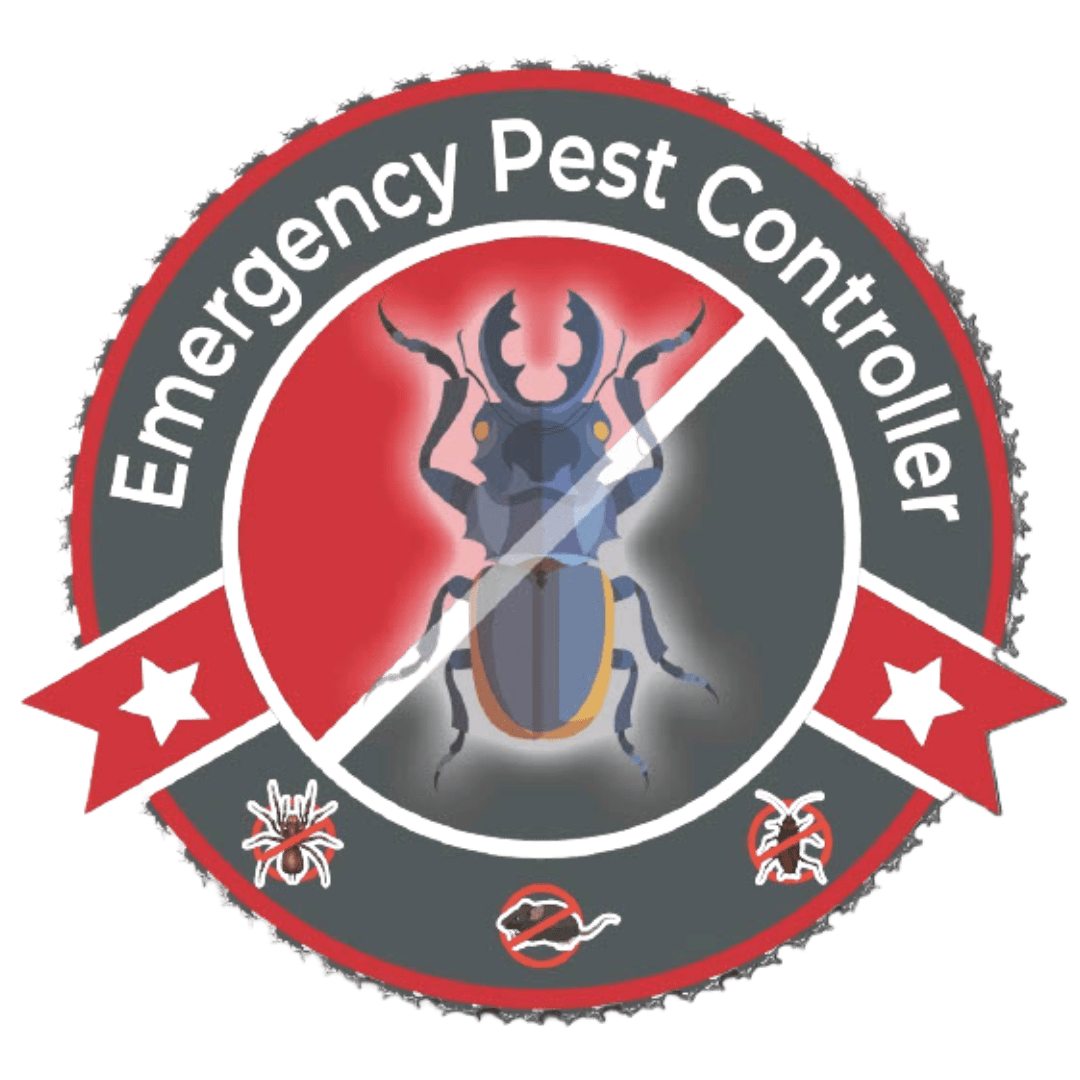Ant Pest Control Melbourne
Get a free quote today!
Our Services

Professional Ant Pest Control for Homes and Businesses
Ants may be small, but an infestation can cause big problems. At Emergency Pest Controller, we specialize in ant pest control in Melbourne, offering fast, effective, and environmentally safe treatments for both residential and commercial properties. Whether you’re dealing with ants in your kitchen, garden, or workplace, our expert team provides comprehensive ant control services in Melbourne to eliminate the problem and prevent it from returning.
Ants are social insects that belong to the Order Formicidae, and they have varied nesting and feeding habits. They are commonly found in wall cavities, roof voids, kitchens, lawns, gardens, exposed soil, and cracks around buildings. Ant colonies often build nests inside decaying wood, rockeries, and crevices near homes and businesses.
During an ant infestation, these pests feed on a wide range of materials but prefer sweet foods and high-protein types such as meat, blood, bread crumbs, and fats. Most DIY ant pest control options do not work effectively because ants have a highly developed sense of smell, allowing them to detect food from a long distance and find alternative routes even after treatment.
For effective and lasting results, it’s important to seek professional ant pest control in Melbourne. Experts like Emergency Pest Controller provide safe and reliable ant control services in Melbourne that target the source of the problem, ensuring complete and long-term relief from ants. Ants use their senses — including smell, touch, taste, hearing, and sight — to communicate and navigate, which is why professional ant infestation treatment in Melbourne is essential for breaking their communication trails and eliminating colonies effectively.
About Our Ant Pest Control Services in Melbourne
At Emergency Pest Controller, we provide complete ant pest control services designed to target the source of the infestation. Using advanced techniques and safe pest management solutions, we deliver results that last. Our trained technicians handle every step of the process — from inspection and treatment to prevention — ensuring your property remains ant-free all year round.
Expert Treatment
Safe Solutions
Long-Term Prevention
Why Choose Our Ant Pest Control Melbourne Services
- Same-day and emergency service available
- Safe for children, pets, and the environment
- Fully licensed and trained pest control experts
- Affordable pricing with no hidden costs
- 100% satisfaction guarantee
We are proud to be known as the best ant control company in Melbourne, trusted by homeowners and business owners for reliable and long-lasting results.
Get a Free Quote Today
Don’t let ants take over your property. Contact Emergency Pest Controller today for professional ant pest control in Melbourne. We provide affordable ant control services in Melbourne, free quotes, and same-day Ant Removal Melbourne across all suburbs.


Why Ants Are Considered Pests
Disease Transmission – Ants can transport several food- borne illnesses, including SALMONELLA because ants can scavenge in kitchens and other food-handling areas and darbade and garbage areas, dog excrement, and other sources of disease organisms.
Plant Damage – When plants are grown, ants may attack and damage or consume seeds and seedlings.
Nuisance Pests – Excavations under paths may be sufficiently extensive to cause cracks in older paths. In addition to nuisance aspects, Ants can also bite and sting humans.
COMMON TYPES OF ANTS
Larger Ants
- Carpenter Ant
- Meat Ant
Small Black Ants
- Black House Ant
- White-footed House Ant
Small Brown Ants
- Argentine Ant
- Pharoah'S Ant
- Coastal Brown Ant
- Odorous Ant
Preparation For Ant Removal
- Clean out the cabinets
- Remove all items from benchtops - and wipe down all Remove all iten the benchs and tables.
- Cover areas that are going to be treated with cloth or plastic
- Empty your bedr bedroom closets
- Cover the utensils and kitchen area.
Ant Control Often Relies on
- A thorough inspection and survey.
- Direct treatment of the nesting sites.
- The Formation of residual barriers between nests and food sources.
- Approaching high standards of Approac sanitation and hygiene.
Insecticides Methods we used for Ant Control
- Surface Spray- Surface spray applied in the form of emulsifiable concentrates, wettable powders, suspension concentrates, and foams are used. When these chemicals are used effectively, long-term protection is provided.
- Baits- Baits are very effective in the control of ant species and very safe for children and pets.
- Space Spray- Space sprays have limited application in ant control, only used for crack and crevice treatment and in brick cavity walls.
- Dusts- Dust formulations applied directly into nesting sites and sensitive areas such as switch boxes, wall, and roof voids.
What you can do to Prevention from Ants
- Hygiene and Sanitation - Improve hygiene and proper sanitation because they do carry and transmit fungal and bacterial organisms.
- Eliminate Food Sources - the surfaces that become contaminated with crumbs and other food particles include kitchen bench surfaces, shelves, and drawers; floors should be free from food sources.
- Garbage Disposal- Garbage bins and waste disposal should be kept clean, dry, and sealed.
Common Ant Problems in Melbourne
Ants are among the most persistent pests in Victoria. They can easily invade kitchens, lawns, gardens, and even electrical equipment. Some species bite, while others contaminate food and surfaces. If you notice long trails of ants, small soil piles, or nests around your home, it’s time to call for professional ant control in Melbourne.
What Causes Ant Infestations
Ants enter homes and businesses searching for food, water, and shelter. Even the smallest crumbs or leaks can attract a colony. They build nests in wall cavities, roof voids, lawns, gardens, decaying wood, cracks, and crevices.
DIY sprays and repellents rarely solve the issue. Ants have a strong sense of smell and can find alternative routes easily, which is why you need expert ant infestation treatment in Melbourne to eliminate colonies at the source.
Our Proven Ant Control Process
Our professional ant pest control services follow a detailed, step-by-step process to ensure complete eradication:
- Inspection – We identify the ant species, nesting sites, and entry points.
- Customized Treatment Plan – Tailored solutions based on your property and infestation level.
- Targeted Treatment – Application of safe, effective gels, sprays, and baits to eliminate colonies.
- Prevention Advice – We seal entry points and provide prevention tips to stop future infestations.

Safe and Eco-Friendly Ant Pest Control
Preventing Future Ant Infestations
Once treatment is complete, prevention is key to keeping ants away. Our team offers expert guidance, including:
- Sealing cracks and entry points
- Keeping surfaces clean and dry
- Storing food in airtight containers
- Regular property inspections
Following these steps along with regular ant control services in Melbourne ensures long-term protection.

Guaranteed Results and Customer Satisfaction
Frequently Asked Questions
If you notice long trails of ants, small soil piles, or nests in your kitchen, garden, or walls, it’s a sign of an infestation. Professional ant pest control in Melbourne ensures ants are completely removed and don’t return.
Yes, absolutely. Our ant control services in Melbourne use eco-friendly and non-toxic treatments that are safe for your family, pets, and the environment while being highly effective against ants.
We offer same-day Ant Removal Melbourne services across all suburbs. Our local technicians respond quickly and provide fast, reliable ant infestation treatments when you need them most.
DIY sprays and traps only kill visible ants but not the colony. Our experts provide professional ant infestation treatment in Melbourne, targeting nests and breaking their communication trails for long-term results.
We’re recognized as the best ant control company in Melbourne, offering affordable pricing, licensed technicians, eco-friendly treatments, and guaranteed results for both residential and commercial properties.
